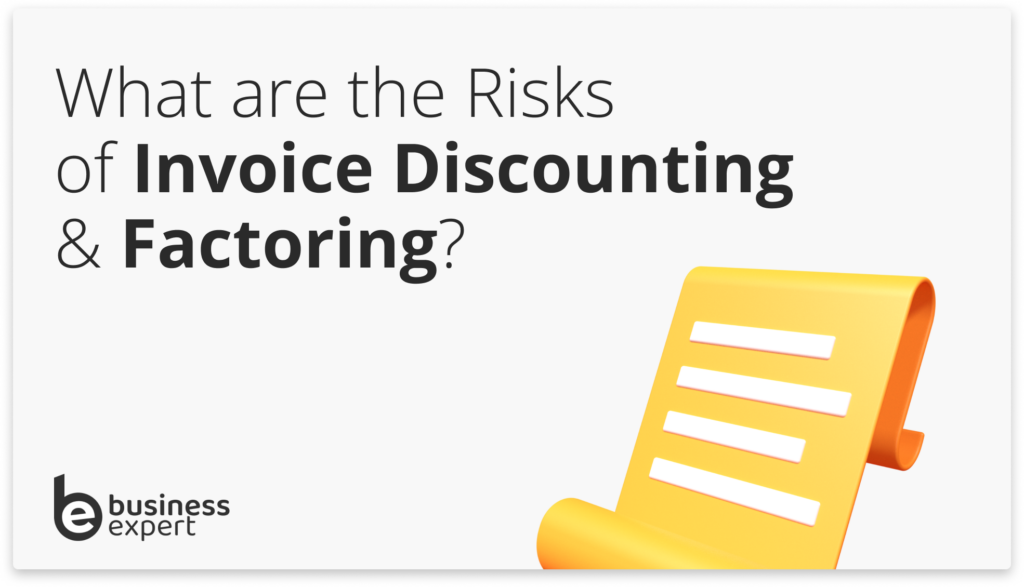Although invoice finance is largely a safe and smooth form of business finance, it carries certain risks or drawbacks, like anything. This article aims to explore what those risks are so that you can better informed.
If you would like free, fast advice about the best source of invoice finance, and the risks involved in the process, do feel free to call us at any time. Our specialist invoice finance concierge service aims to match companies with exactly the right provider for them.
Get a Fast Invoice Discounting Quote Now
- Up to 100% of invoice value from low 0.5% rates
- 100% Free and No obligation
- Complete 1 Form to Receive Tailored Quotes
- A simple and transparent fee structure
- Call us anytime for advice
- We’ll never sell or misuse your data

Potential Risks Involved With Invoice Factoring
Less Control
Once you sign up for an invoice factoring agreement, you lose a measure of control of your business. For example, the factor might not allow you to do business with a particular customer because of their poor credit history. Alternatively, you could just keep that customer’s account out of the factoring agreement.
The Stigma
Factoring is sometimes associated with businesses that are struggling to manage their cash flow. Customers are aware of your factoring agreement; they are notified when the factor takes over and they pay the lender directly. This could impact your reputation.
The Cost
Factors manage the credit control and collections process: this pushes the costs higher. Find out more about the costs of factoring.
Reduced Profit Margins
As with any type of finance, this is not free money. Your profit margins will take a hit as a result.
Limited Borrowing Options
When you enter into a factoring agreement, your debtor book is no longer available as security. This limits other potential sources of borrowing, such as a bank overdraft.
Risk of Funding Fluctuations
Factors disallow payments from those they deem to be ‘poor quality’ debtors. This may result in fluctuations in the lending amount.
Exiting Arrangements
If you want to end your factoring arrangement, you must repay the money that has been advanced but not yet paid by your customer. This may require some planning so it doesn’t result in a significant cash flow shortage.
Customer Relations
Relationships with customers are often strengthened when you work with them directly. The presence of a factor could harm relations with customers who would prefer to pay you.

Are There Specific Risks Related to Invoice Discounting?
Limited Availability
This method of financing is often extended only to businesses with an established, proven credit control and collection process. Why? The risks to the provider are much greater than in factoring because the invoice discounter has no control over the debtor book. They need to be sure they are making a ‘safe bet.’
Commercial Invoices Only
Invoice discounting lenders, like most factoring providers, only offer advances on business-to-business transactions. You cannot borrow against business-to-consumer sales.
Risk of Hidden Costs
Some lenders bury hidden costs in your agreement. It is essential you know exactly what you’re paying for.
Cost
Yes, invoice discounting is less expensive than factoring – but the form of lending can sometimes cost more than an overdraft or loan.
Dependency
Some businesses can become overly dependent on invoice discounting. This can make it difficult to leave an agreement without impacting cash flow and sales levels.
Our team has decades of experience in business finance and offers a free concierge service to anyone seeking specialist funding. Call us now on 08000 24 24 51 to talk to an expert.
